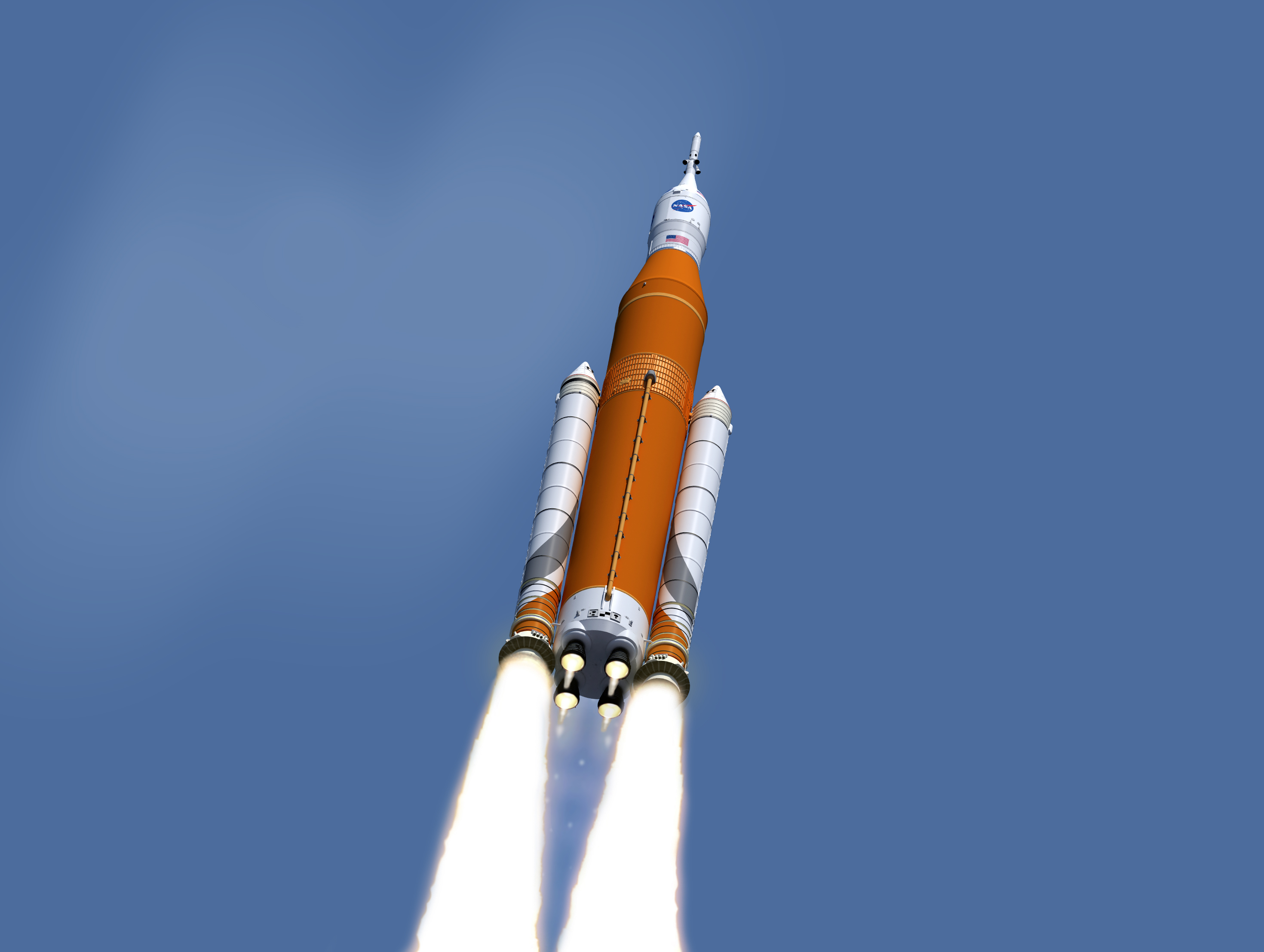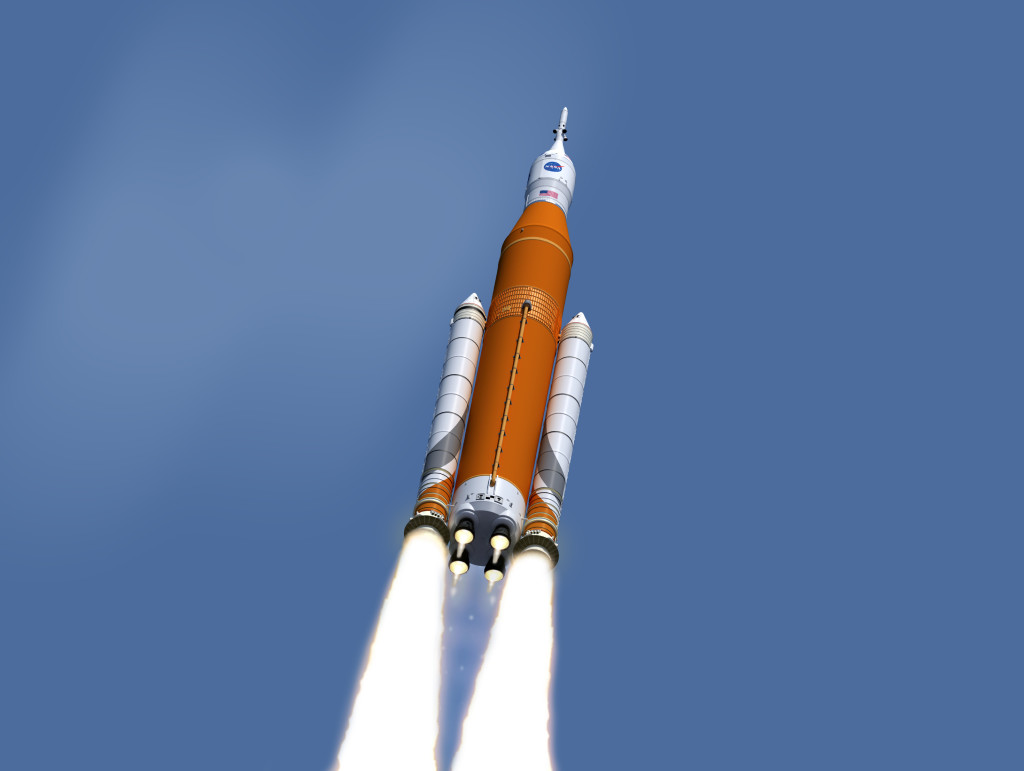The largest spacecraft welding tool, the Vertical Assembly Center, was recently used to complete the final welding for a liquid oxygen tank confidence article at Michoud Assembly Facility in New Orleans. This provided the first glimpse of what one of the two tanks that comprises the SLS core stage will look like.
The rear and final segment for a full-scale test version of the SLS booster was delivered to Orbital ATK’s test site in Utah where it will be assembled with the other four booster segments and outfitted for this summer’s booster qualification ground test. The booster’s performance will be measured at a cold motor conditioning target of 40 degrees Fahrenheit and will be the second full-scale test that provides crucial data to support booster qualification.
An RS-25 flight engine for SLS was tested for 500 seconds and the engines manager at NASA’s Marshall Space Flight Center, Steve Wofford, said “Not only does this test mark an important step towards proving our existing design for SLS’s first flight, but it’s also a great feeling that this engine that has carried so many astronauts into space before it’s being prepared to take astronauts to space once again on SLS’s first crewed flight.”
NASA shared information about its goals and initiatives at South by Southwest (SXSW). Some 10,000 participants were able to look at interactive exhibits and displays that included a launch pad virtual tour with SLS on the mobile launcher and a 30-foot inflatable version of the rocket. NASA Astronauts Victor Glover and Jessica Meir took part in a panel discussion that received a standing ovation about the next steps on the journey to Mars.



